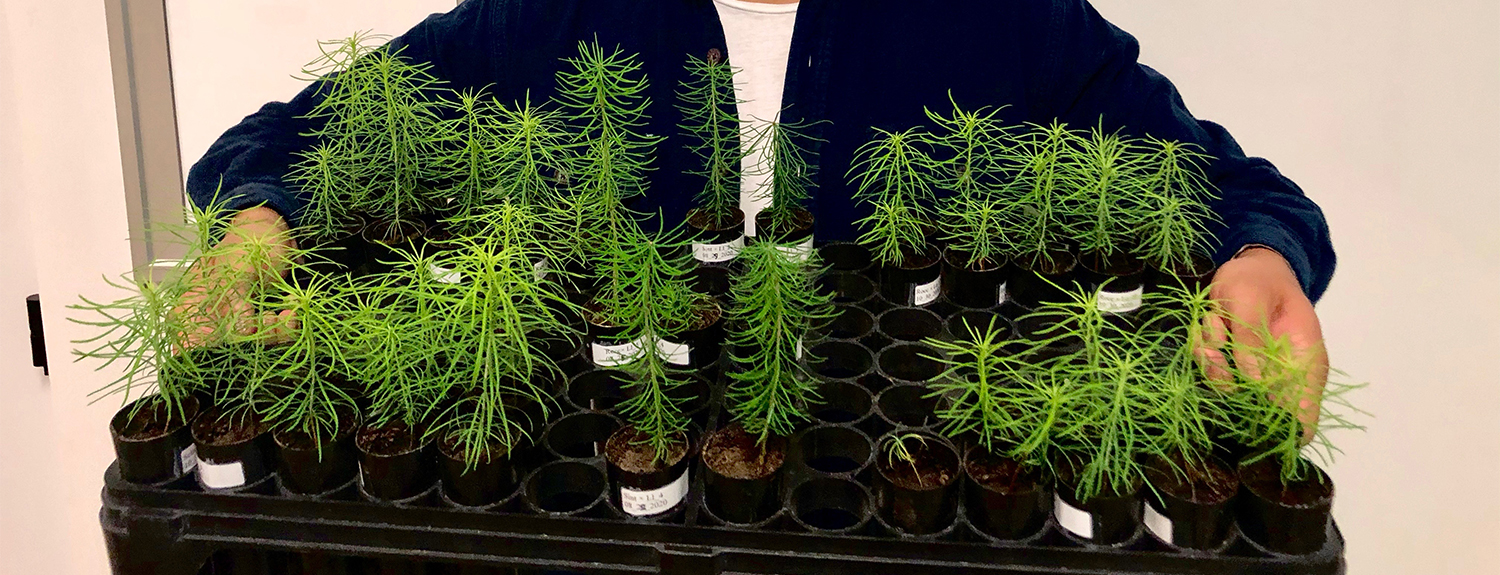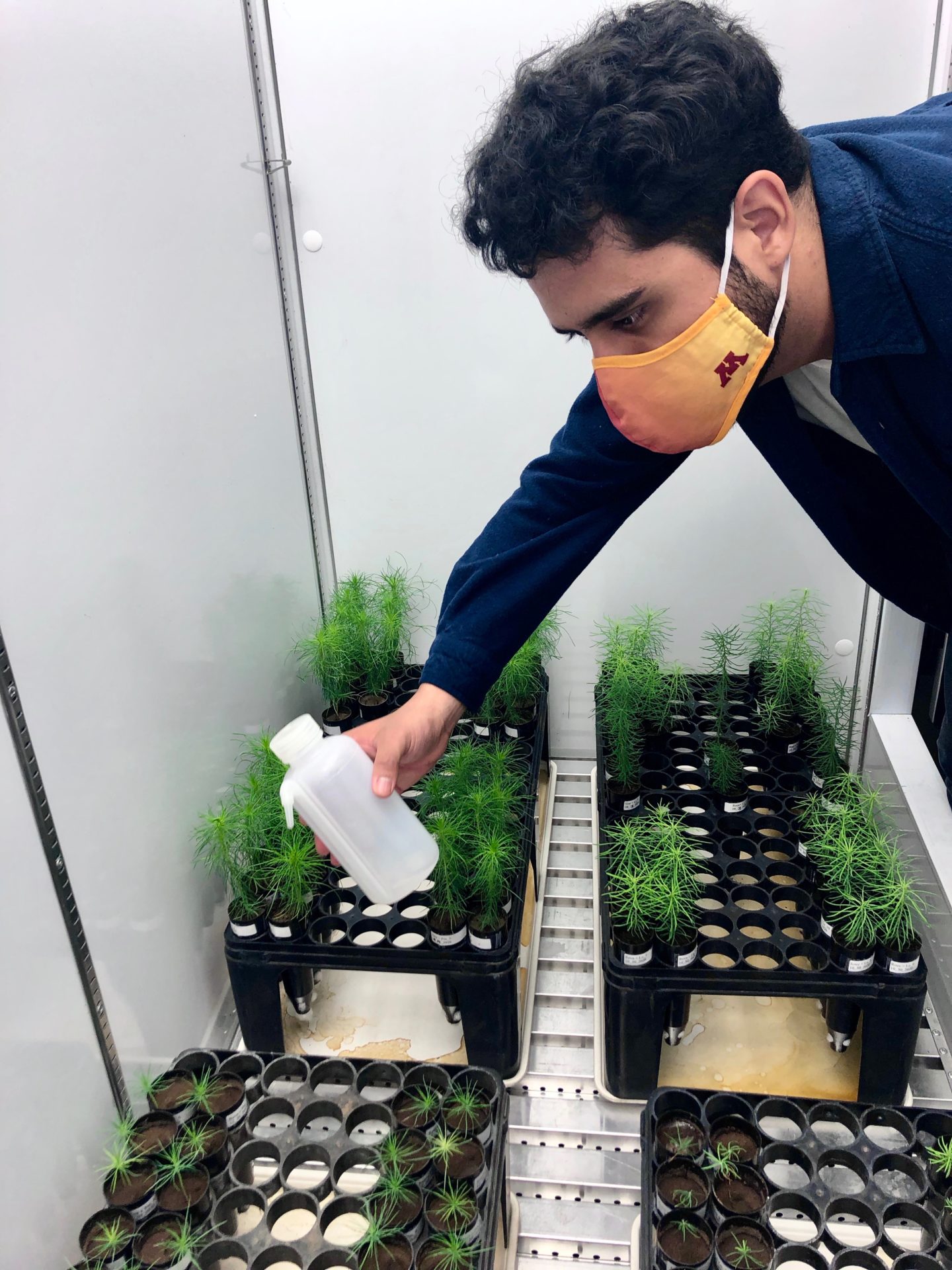
Eduardo Pérez-Pazos
Research Q & A
What’s your hometown?
I was born and raised in Mexico City, where I lived my entire life before moving into the Twin Cities for studying my Ph.D. in Ecology, Evolution, and Behavior program at the University of Minnesota.
What are you currently working on?
Right now, I am studying the fungal genus Rhizopogon and its degree of host specificity. This genus is known for being specific to plants in the Pinaceae family. I aim to discover if this host specificity can be broken apart when the right ecological context is present. This means, when is this genus able to associate with non-Pinoid host trees and how strong are these interactions. One of the most interesting aspects of this research is that these “anomalous associations” are rare in nature, so I will develop some semi-natural bioassays to test the endurance of these associations when they are exposed to the fungal community that inhabits forest soils. My main goal is to understand the dynamics of host specificity and to determine why these associations are scarce in nature.
How did you get started/what drew you to your area of study?
I became attracted to fungi since I was an undergrad student. At the National Autonomous University of Mexico (UNAM, by its acronym in Spanish), I learned from Professor Margarita Villegas-Ríos about the fundamentals of fungi. I instantly became fascinated by the shapes of their sporocarps (of mushroom-forming fungi) and then by their complexity in terms of their life cycle, different types of sexual reproduction, and mainly their ecological role in almost every type of environment in the world. After that, I became a teacher of several fungal biology and ecology courses and through teaching, I developed a more profound joy for studying fungi and their interactions at different ecological levels.
Why are you focusing your work in that area?
I am interested in learning how mycorrhizal symbioses (i.e., the interaction between fungi and the roots of trees) are formed. My goal is to understand how the fungus and the plant, start to interact, and how this process led to a high or low degree of host specificity. This is important given that most terrestrial plants are associated with mycorrhizal fungi and depend on them to acquire nutrients from the soil.
What would be the five-song soundtrack to your research work/What five songs do you listen to most while you work?
My soundtrack for working includes a variety of musical genres (depending on my mood). Here I will only mention my 2020 top-five favorite happy songs from my beloved Latin America:
- “La Rebelión” by Joe Arroyo
- “Qué precio tiene el cielo” by Marc Anthony
- “Latinoamerica” by Calle 13
- “El Niagara en Bicicleta” by Juan Luis Guerra
- “High” by Rawayana ft. Apache



